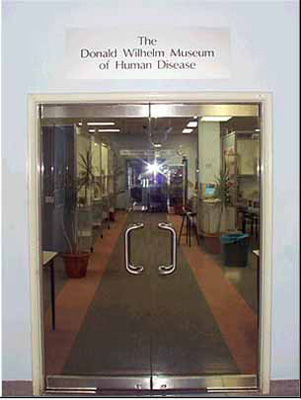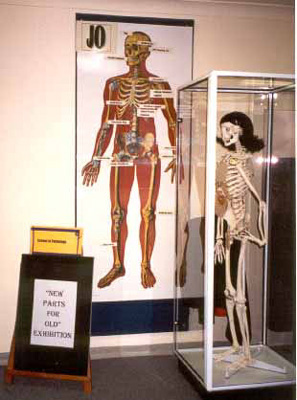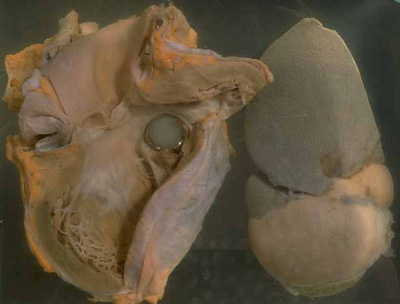The UNSW Medicine Hall of Health Exhibition and Public Programs Areas.
The Museum of Human Disease & Hall of Health
Since 1996, the role of the Museum of Human Disease at UNSW has been expanded to promote the education of junior and senior high school students and community interest groups about good health and the prevention of common diseases. Visitors experience a guided two-hour multimedia program including access to networked computers, microscopes, museum exploration, special exhibitions, video presentation and electronic projection facilities geared for group audiences.
Address:
5th floor, Wallace Wurth Building, Cnr High & Botany St, Kensington, NSW
Tel:
0293851522
Hours:
9.00am - 5.00pm Monday - Friday usually. Booking necessary.
Email:
Admission:
$6.00 per student/pensioner + 10%GSTfor 2hr program. Maximum of 60 students/persons per group.Minimum charge $66 per program.
Facilities:
Workshops, research facilities, exhibition program and education facilities including the Medical Discovery Lab dedicated to multimedia programs. There are 15 networked computers, microscopes, plus a large projection screen and electronic facilities for group instruction.
Collection:
The Museum contains over 3,000 specimens which display diseased human tissue at the macroscopic level, preserved in formalin. In addition, replacement 'bionic' bodyparts are displayed as part of medical and health education and promotion programs including posters, charts, and accompanying information to suit wide-ranging audiences.
Items
Museum Doors
Main entry to Museum Area

Creator:
Professor Donald Wilhelm (Foundation Professor)
Description:
Professor Donald Wilhelm was the Foundation Professor of the School of Pathology, Faculty of Medicine at UNSW and founder of the Museum of Human Disease. Currently museum services extend to community and high-school groups in addition to use by Medical and Science University students.
Date:
1959 Foundation era
Syphilitic Bones
Syphylitic Periostitis

Description:
Chronic bone infection of the foot, Syphilitic Periostitis, results in thickening of the underlying bone which is evident on X-ray. Syphilisis a sexually transmitted, bacterial infection, which, if left untreated, damages bones and blood vessels in addition to other associated problems.
Smoker's Lung
Pulmonary Emphysema

Description:
Pulmonary emphysema causing permanent scarring of the lung where the air sacs become damaged and consequently destroyed and non functional due to heavy smoking.
The Bionic Woman
Jo'

Creator:
The School of Biomedical Engineering, UNSW
Description:
Jo' short for 'Josephine' is the female equilalent of a similar male skeleton owned by the Therapeutic Goods Administration in ACT called 'Bonaparte' bearing implants and prosthetic devices.
Date:
1999
Therapeutic Goods Administration (TGA) based in Canberra (ACT)
Heart Valve Implant
Ball Valve Prosthesis in Heart

Description:
The specimen consists of an enlarged heart and a portion of the spleen. A ball valve prosthesis has replaced the mitral valve which is important in preventing any backward flow of blood.
